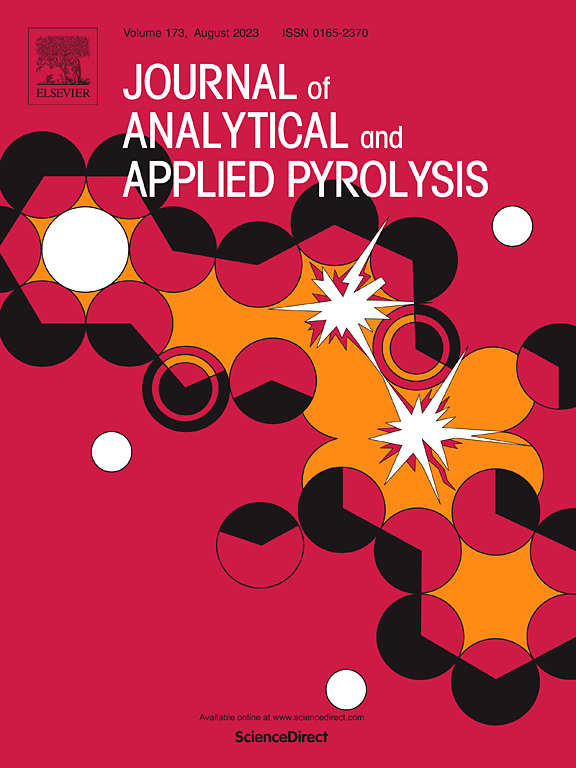b掺杂对核桃壳生物炭理化结构及CO2吸附性能的影响
IF 5.8
2区 化学
Q1 CHEMISTRY, ANALYTICAL
引用次数: 0
摘要
采用预改性掺杂法制备了b掺杂核桃壳炭。采用BET、SEM、Raman、XRD、FT-IR、XPS等表征技术研究了b掺杂量、掺杂温度、偶联活化剂(活化剂用量、活化温度)对核桃壳生物炭理化结构和CO2吸附性能的影响。结果表明:b掺杂核桃壳炭具有较高的比表面积,孔隙结构以微孔为主;随着b掺杂量的增加,核桃壳炭的CO2吸附能力先上升后下降。最佳掺杂质量比为2:1,最佳热解温度为800℃。KOH活化后的生物炭孔隙变得更加丰富和无序。过量的活化剂会破坏活性炭的孔隙结构,从而降低吸附性能。激活剂与核桃壳炭的最佳质量比为1:1。随着活化温度的升高,活性炭对CO2的吸附能力先提高后下降。核桃壳炭的最佳活化温度为700℃。与未掺杂b的W800相比,CK1-1-700的CO2吸附性能提高了76.70 %。CK1-1-700表现出良好的循环性能。b掺杂和活化处理显著提高了核桃壳炭对CO2的吸附能力。这些研究结果可为生物质的高价值利用提供参考。本文章由计算机程序翻译,如有差异,请以英文原文为准。
Effects of B-doping on the physicochemical structure and CO2 adsorption property of the walnut shell bio-char
B-doping walnut shell char was prepared by the premodified doping method. The effects of B-doping amount, doping temperature, and coupling activation agent (activator amount, activation temperature) on the physicochemical structure and CO2 adsorption performance of walnut shell biochar were investigated using BET, SEM, Raman, XRD, FT-IR, and XPS characterization techniques. The results indicated that B-doping walnut shell char exhibited a high specific surface area, and the pore structure was dominated by micropores. As the amount of B-doping increased, the CO2 adsorption capacity of walnut shell char initially rose and then declined. The optimal doping mass ratio was 2:1, and the best pyrolysis temperature was 800 °C. The biochar pores became more abundant and disorderly after KOH activation. Excessive amounts of activators could damage the pore structure of activated char, thereby reducing the adsorption performance. The optimal mass ratio of the activator to walnut shell char was 1:1. As the activation temperature increased, the adsorption capacity of activated char for CO2 initially improved and subsequently declined. The optimal activation temperature of walnut shell char was 700 °C. The optimal CO2 adsorption performance was achieved by the CK1–1–700, which was 76.70 % higher compared to W800 without B-doping. Additionally, CK1–1–700 exhibited good cyclic performance. B-doping and activation treatment significantly enhanced the CO2 adsorption capacity of walnut shell char. These research findings could serve as a reference for the high-value utilization of biomass.
求助全文
通过发布文献求助,成功后即可免费获取论文全文。
去求助
来源期刊
CiteScore
9.10
自引率
11.70%
发文量
340
审稿时长
44 days
期刊介绍:
The Journal of Analytical and Applied Pyrolysis (JAAP) is devoted to the publication of papers dealing with innovative applications of pyrolysis processes, the characterization of products related to pyrolysis reactions, and investigations of reaction mechanism. To be considered by JAAP, a manuscript should present significant progress in these topics. The novelty must be satisfactorily argued in the cover letter. A manuscript with a cover letter to the editor not addressing the novelty is likely to be rejected without review.

 求助内容:
求助内容: 应助结果提醒方式:
应助结果提醒方式:


